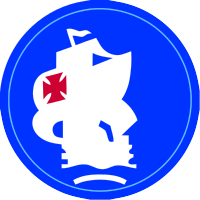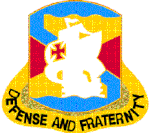United States Army South
| United States Army South | |
|---|---|

United States Army South shoulder sleeve insignia
|
|
| Active | 1904–present |
| Country | United States |
| Branch | U.S. Army |
| Part of | United States Southern Command |
| Garrison/HQ | Fort Sam Houston/Joint Base San Antonio |
| Motto(s) | "Defense and Fraternity" |
| Engagements | World War II, Operation Just Cause, Operation Uphold Democracy, Operation Unified Response |
| Decorations |
Philippine Presidential Unit Citation- 1941, World War II Meritorious Unit Commendation - 1944, World War II Army Superior Unit Award- 1994 Operation Uphold Democracy, Army Superior Unit Award - 2011 Operation Unified Response |
| Commanders | |
| Current commander |
Major General Clarence K.K. Chinn June 2015 - present Recent former Commanders: Major General Joseph P. DiSalvo June 2013 - June 2015, Major General Frederick S. Rudesheim September 2012 - June 2013, and Major General Simeon G. Trombitas November 2009 - September 2012. |
| Insignia | |
| Distinctive unit insignia |  |
Philippine Presidential Unit Citation- 1941, World War II
Meritorious Unit Commendation - 1944, World War II
Army Superior Unit Award- 1994 Operation Uphold Democracy,
Major General Clarence K.K. Chinn June 2015 - present
Recent former Commanders: Major General Joseph P. DiSalvo June 2013 - June 2015, Major General Frederick S. Rudesheim September 2012 - June 2013, and Major General Simeon G. Trombitas November 2009 - September 2012.
United States Army South is the Army's service component command of United States Southern Command whose area of responsibility includes 31 countries and 15 areas of special sovereignty in Central and South America and the Caribbean. It is headquartered at Fort Sam Houston, Texas.
U.S. Army South (ARSOUTH) conducts and supports multinational operations and security cooperation in the U.S. Southern Command area of responsibility in order to counter transnational threats and strengthen regional security in defense of the homeland.
U.S. Army South has existed under its current name since 1986, but its historical roots reach back much farther, to the Isthmian Canal Commission and the Panama Canal Guard of 1904–1914, both of which played a pivotal role in the construction and early defense of the Canal.
With the active support and encouragement of the United States, Panama declared its independence from Colombia on 3 Nov. 1903 and that same month, the United States received the right to build and administer the Panama Canal.
...
Wikipedia
